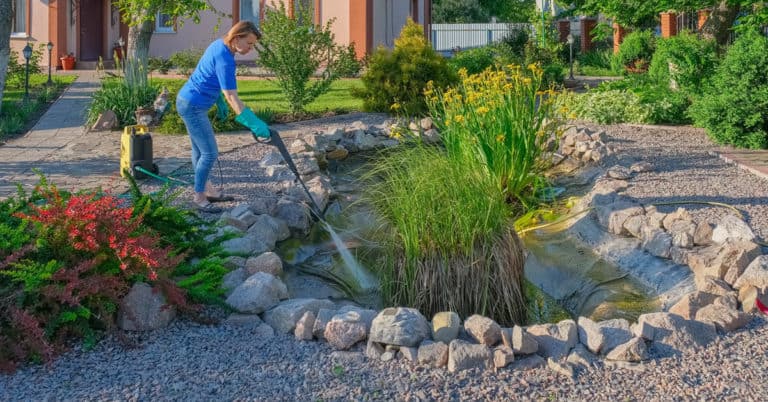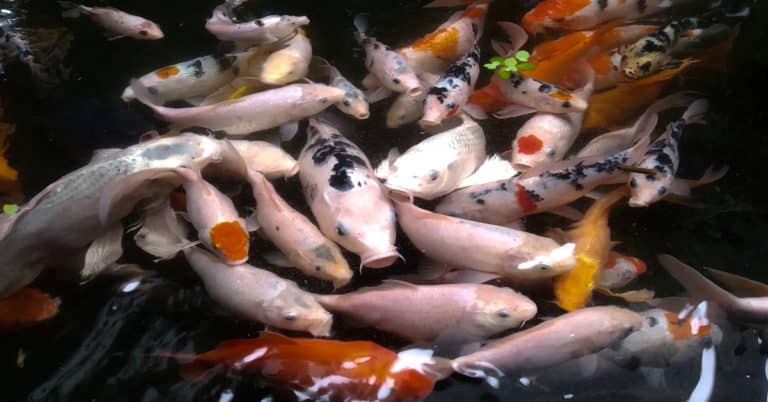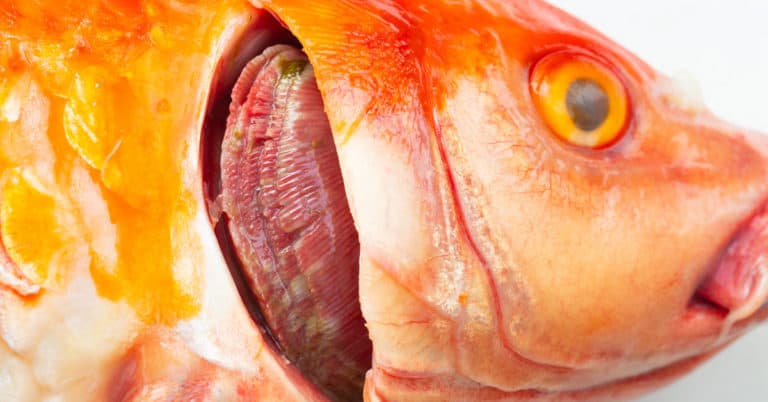Koi ponds are beautiful water gardens filled with colorful koi fish. Thought to have originated in Japan, koi ponds make a lovely, serene addition to any backyard landscape. Koi ponds are naturally beautiful, bringing peace and tranquility to any backyard.
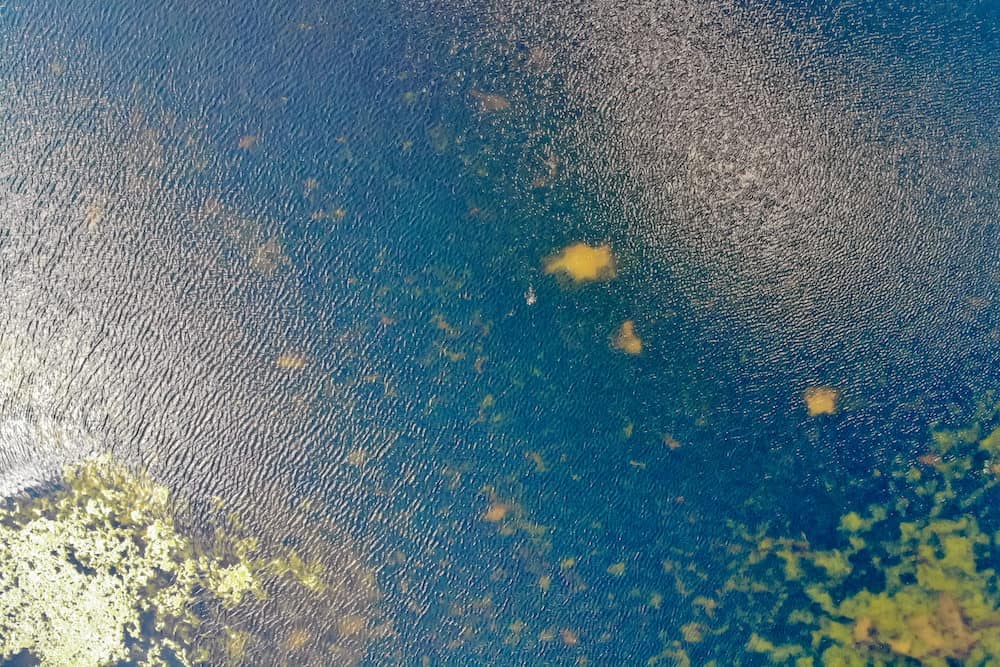
Additionally, koi fish, or living jewels, are very low-maintenance and easy to care for. Algae is a standard and often regular occurrence in koi ponds. When kept at an average level, it can provide many benefits to your koi pond; however, it can become harmful when it gets out of hand.
As a hobbyist and pond owner, I enjoy the tranquility of koi ponds and have researched all about koi pond algae control. Please keep reading to learn more about how to prevent algae in your koi pond, natural and chemical methods to control it, and when it is good vs. bad.
Balance is critical for everything in life. This idea especially applies to algae in koi ponds. When at a normal level, algae is a common, even beneficial occurrence and is essential for a healthy pond.
Even though algae may be unsightly when it lays at the surface of a koi pond, it does have some benefits. Algae acts as a natural nitrate filter in the pond by keeping nitrates and nutrients at an optimum level for koi. It can also add oxygen back into the water through photosynthesis.
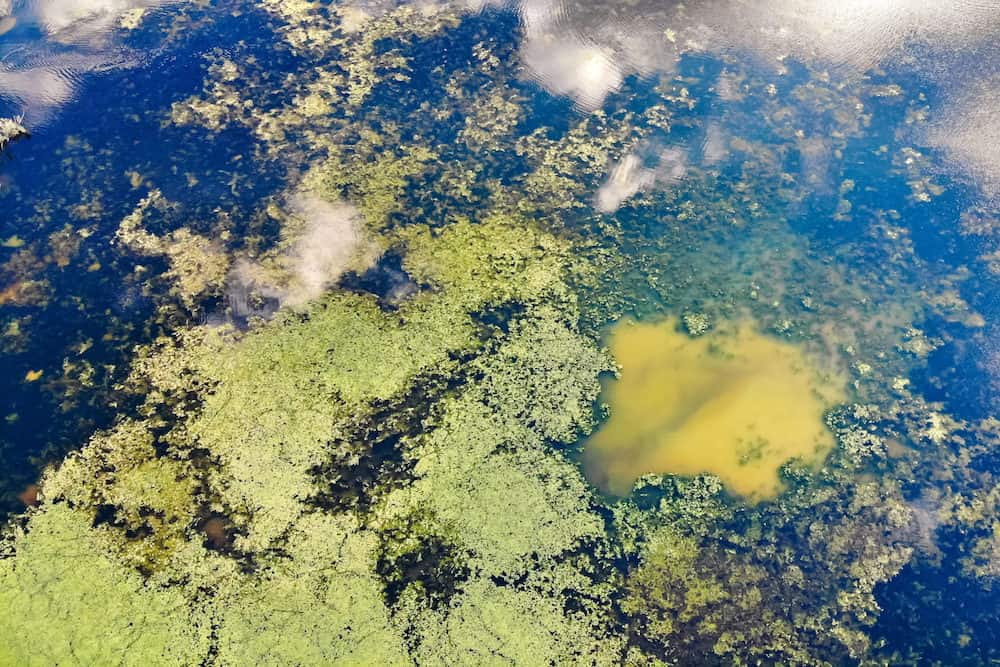
Algae also provides a small level of food for koi, although it should not be depended on for all your koi’s feeding needs. It’s best as a snack!
An average level of algae and beneficial bacteria is a crucial ingredient for any healthy pond. Thus, a balanced koi pond should be the ultimate goal for any pond hobbyist.
Excessive amounts of algae, or when algae get out of control, can lead to many adverse effects for your koi pond. Excessive amounts of algae cause the oxygen levels in the pond to drop rapidly, meaning dangerous living conditions for the koi.
Koi need oxygenated pond water to breathe and survive. Decreasing oxygen levels in the pond can have a devastating effect on your koi fish.
Algae can also clog your pond pumps and filters, potentially leading to damaged equipment and making cleaning your pond more difficult.
In addition, algae overgrowth is incredibly unsightly - picture a pond covered in green scum, and you know what I’m talking about! Algae can also cover and hide your beautiful living jewels.
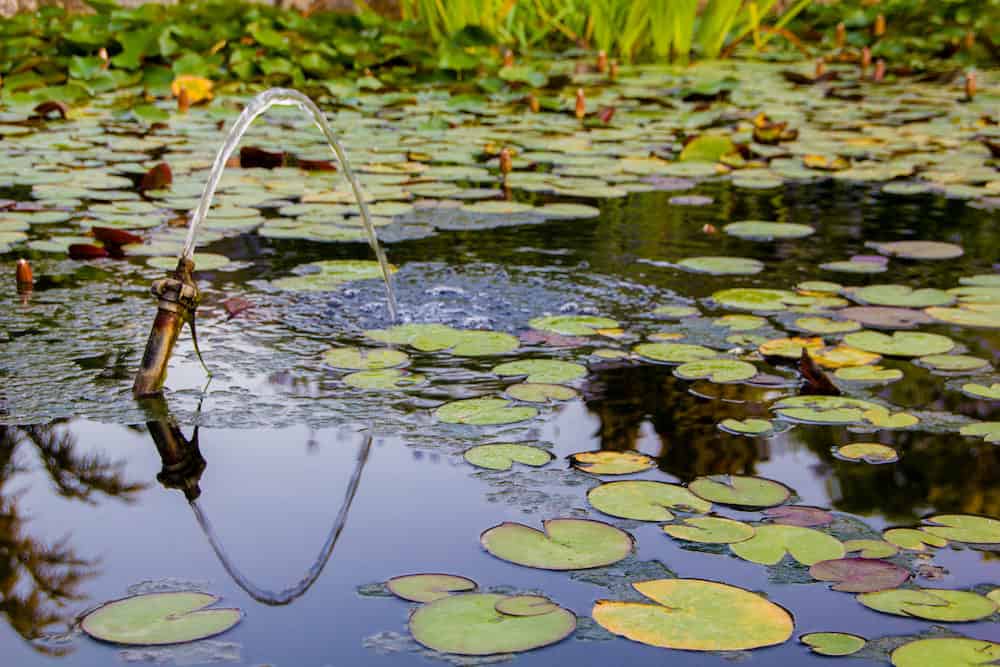
Algae naturally appear in the spring and summer, as the weather (and pond water) warms and there is more sunlight. This natural occurrence is expected.
However, when a massive amount of algae appears in a koi pond out of nowhere, that is called an algae bloom. Many factors cause algae blooms in koi ponds:
Algae blooms are incredibly harmful to the health of your koi pond and koi pond algae control needs to be taken into consideration to prevent this.
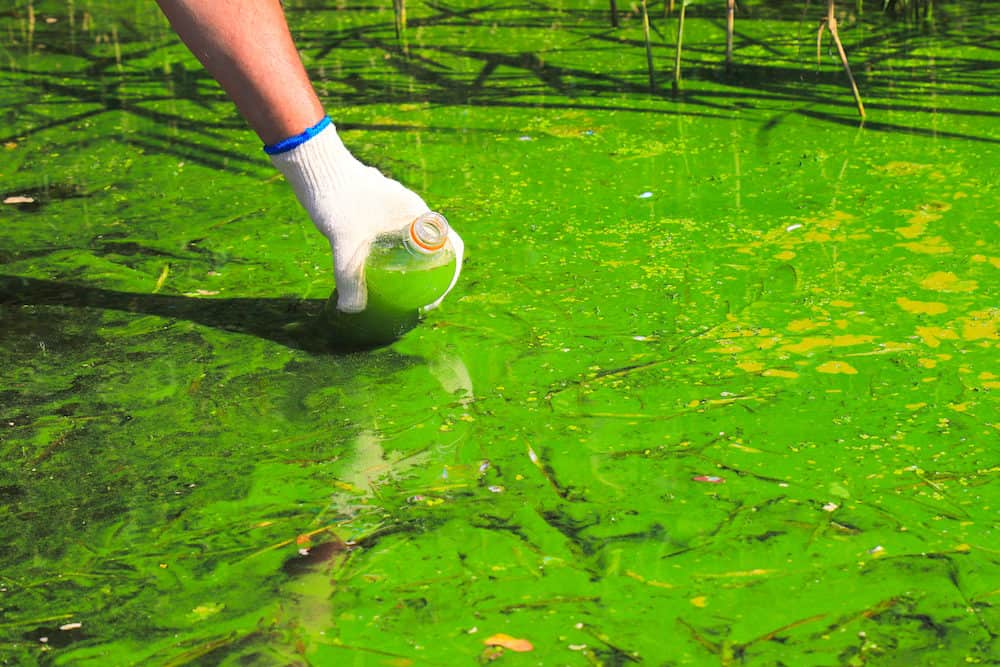
There are two main types of algae that affect koi ponds: planktonic and filamentous. Both can cause harmful effects to your koi fish when allowed to grow in excess.
Planktonic or green water algae is the type of pond algae known for causing green water. This change in water color is often due to a nutrient surplus in the pond, either from an abundance of sunlight or too many fish for the pond size.
Combining these factors causes the generation of a large amount of organic matter, which the algae will feed off of. Green water algae is the primary type of algae seen in algal blooms.
Filamentous algae, also known as string algae, grows up from the bottom of a bond before breaking away, floating to the surface and collecting there. It causes visually unpleasant pond scum.
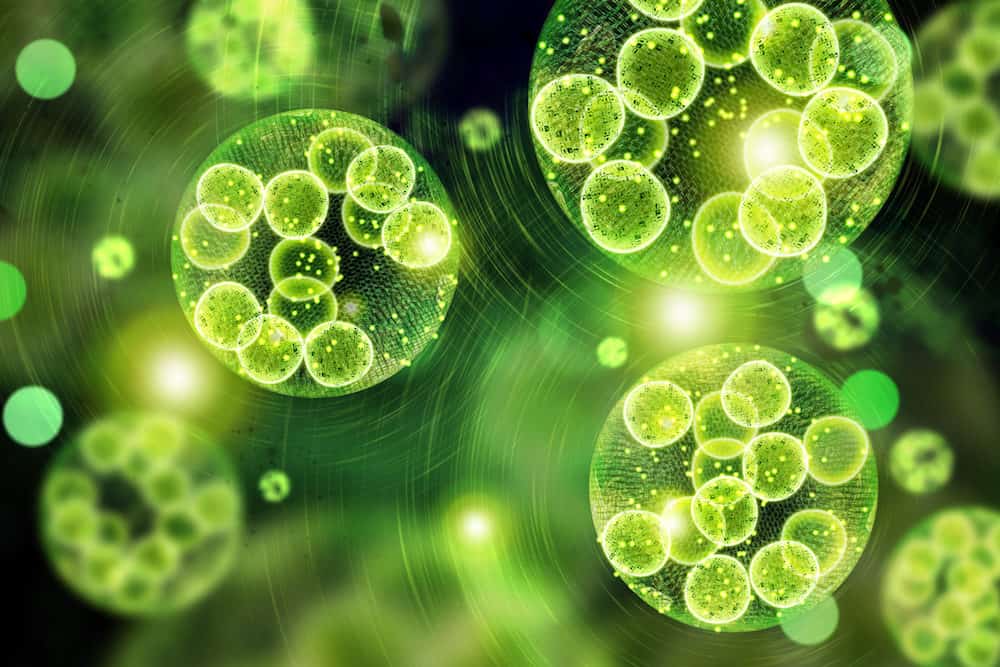
String algae can also cause problems by clogging pond filters and pumps.
Because there are many types of filamentous algae and some types are resistant to algaecides, prevention is the best approach to their control.
The best approach for koi pond algae control is to prevent it in the first place. I suggest a few natural prevention methods for how you can do so, starting with the design of your koi pond and what you can do after you build your koi pond.
Pond design is surprisingly key to preventing algae blooms. When constructing your koi pond, keep depth in mind. A deeper pond stays cooler in warm summer months, making it harder for algae to grow. Experts say that a koi pond with a graduated bottom of varying depths, about 40% deep, 30% intermediate, and 30% shallow, does best.
Adding a waterfall to the koi pond, especially one that runs 24/7, prevents stagnant water and keeps a consistent water flow in the pond, preventing algae growth. Waterfalls also provide additional oxygen to your pond.

Speaking of oxygenating, other types of equipment that can circulate water and add air to a koi pond are airstones, water jets, fountains, and air pumps. Adding oxygen helps remove CO2 from the water, which algae thrive on, and allows the beneficial, aerobic bacteria to grow. This oxygenation makes the koi pond environment less friendly for algae.
Another factor to consider when building a koi pond is the pond construction materials. Using materials like marble and limestone can increase the pH level of the water, which is more appealing to algae. Concrete, although expensive, is an excellent material to use for a koi pond as it helps buffer swings in pH.
Finally, it is essential to provide shade for the pond and prevent full, direct sunlight onto the water. Sunlight is a crucial ingredient for algal growth. Adding foliage around the pond and other floating pond plants like water hyacinths can help. Pond dyes can also create shade and prevent sunlight from seeping through as well.

Not only are plants critical for providing shade to the koi pond, but they also help absorb nutrients in the water, leaving little for the algae to feed off of. Submerged plants like anacharis, hornwort, and parrot’s feather also release oxygen back into the water while absorbing nutrients. These two actions help starve algae and prevent their growth.
Once a koi pond is built, there are additional prevention methods a pond hobbyist can take to ensure proper algae levels and prevent algae overgrowth.
First, ensure the pond has a proper filtration system. Install a UV clarifier as part of this system to kill algae cells or spores as they pass through the filtration system. Keep in mind that a UV clarifier will also kill bacteria, so make sure it is inactive if you need to add bacteria to your pond.
Once the mechanics are out of the way, make sure to perform regular maintenance checks on your pond (i.e., see that there is no standing water), pond equipment, and monitor the pond’s pH levels. Algae love higher pH levels. Carefully adding white vinegar to the koi pond will help lower the pond’s pH.
Partial water changes are another great option for preventing algae blooms in koi ponds. By draining some of the water out of the pond and adding fresh water, you reduce the amount of nutrient-rich water already in the pond. Be careful with this method, though, as doing it too often can shock the koi fish.
A few products that can be added to a koi pond help clump particulate matter together, which can then be removed, usually by filtration. The most popular products that do so are phosphorus binders and water clarifiers.
Finally, one of the easiest methods to prevent algae overgrowth is not to overfeed the koi fish. Overfeeding koi fish causes more organic matter to collect in the pond, creating more food for algae to eat and thrive on.
In addition, when feeding your koi, use high-quality fish food. Higher quality food is more fully digested, leaving fewer waste nutrients to pass through the fish and into the pond.
Regular monitoring and proper management of your koi pond will help prevent algae overgrowth.
A combination of both natural and chemical methods is often needed for koi pond algae control, if it is already a problem.
Barley products, such as barley straw and barley extract, are excellent natural alternatives to chemical algae control products. Barley cannot remove algae as quickly as chemical treatments, but it is better for the long-term control and health of your koi pond.
When barley decomposes in pond water, it produces hydrogen peroxide, which is a very powerful algaecide. Barley also produces hydrogen peroxide in low enough concentrations to be safe for your koi fish. However, barley is not the best choice during an algae bloom, but rather works best when you are starting to see an algae problem or prevent one.
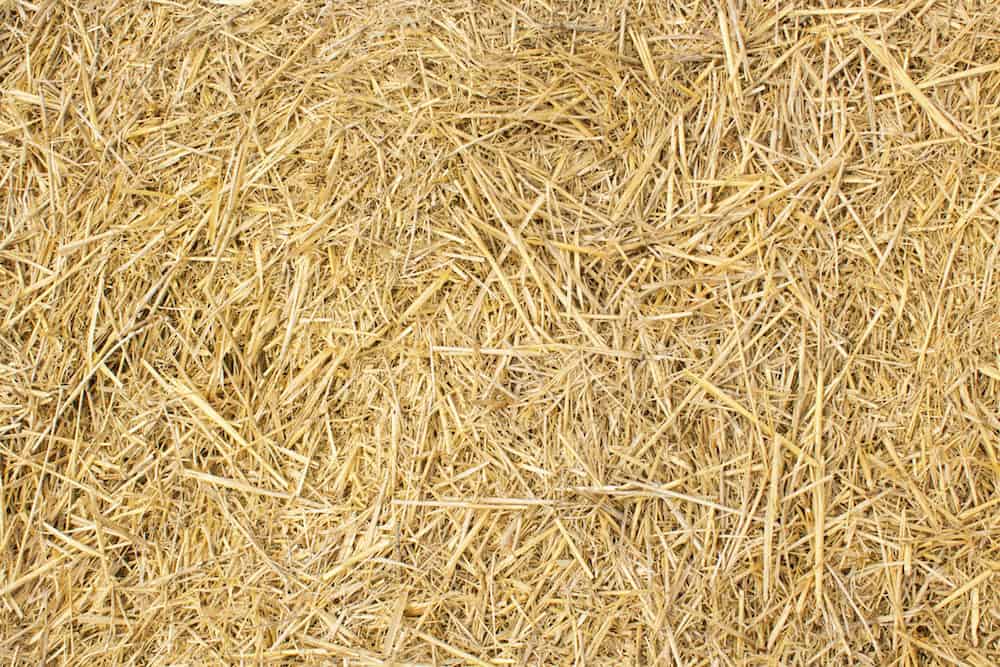
Oxygenating pond plants not only help prevent algae growth, but they can also help control it if there is an existing problem. As previously mentioned, aquatic plants absorb nutrients in the water, which cuts off the algae’s feed supply. Algae already living in a koi pond will die off if they no longer have access to nutrients.
As mentioned above, UV clarifiers kill algae cells; however, they are only effective against planktonic pond algae and do not kill filamentous algae.
To help reduce filamentous algae, you can use physical control methods, such as a net to remove it from the pond physically. Some pond keepers even use hoses to blast string algae off of pond rocks and waterfalls.
Algaecides are the primary method of chemical control for koi pond algae. These chemicals should be used as a last resort, as improper use can harm, even kill, your pond plants and even koi fish.
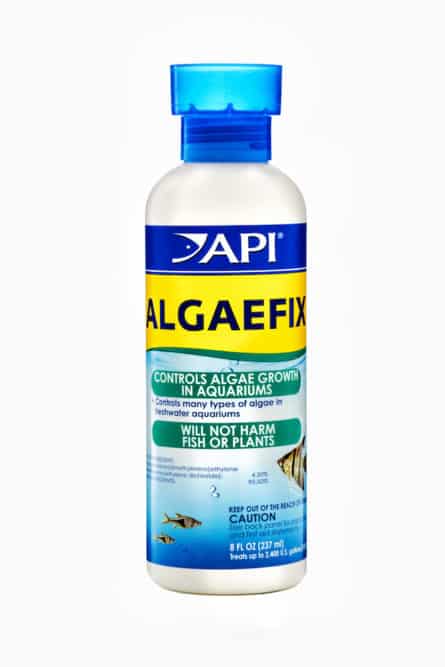
AlgaeFix is a common algaecide that effectively kills string algae while also helping control green water algae. A more natural, organic algaecide option is GreenClean, which works through oxidation.
Keep in mind that low oxygen levels are often a side effect of chemical treatments, so it is wise to monitor that along with your fish health when using algaecides.

